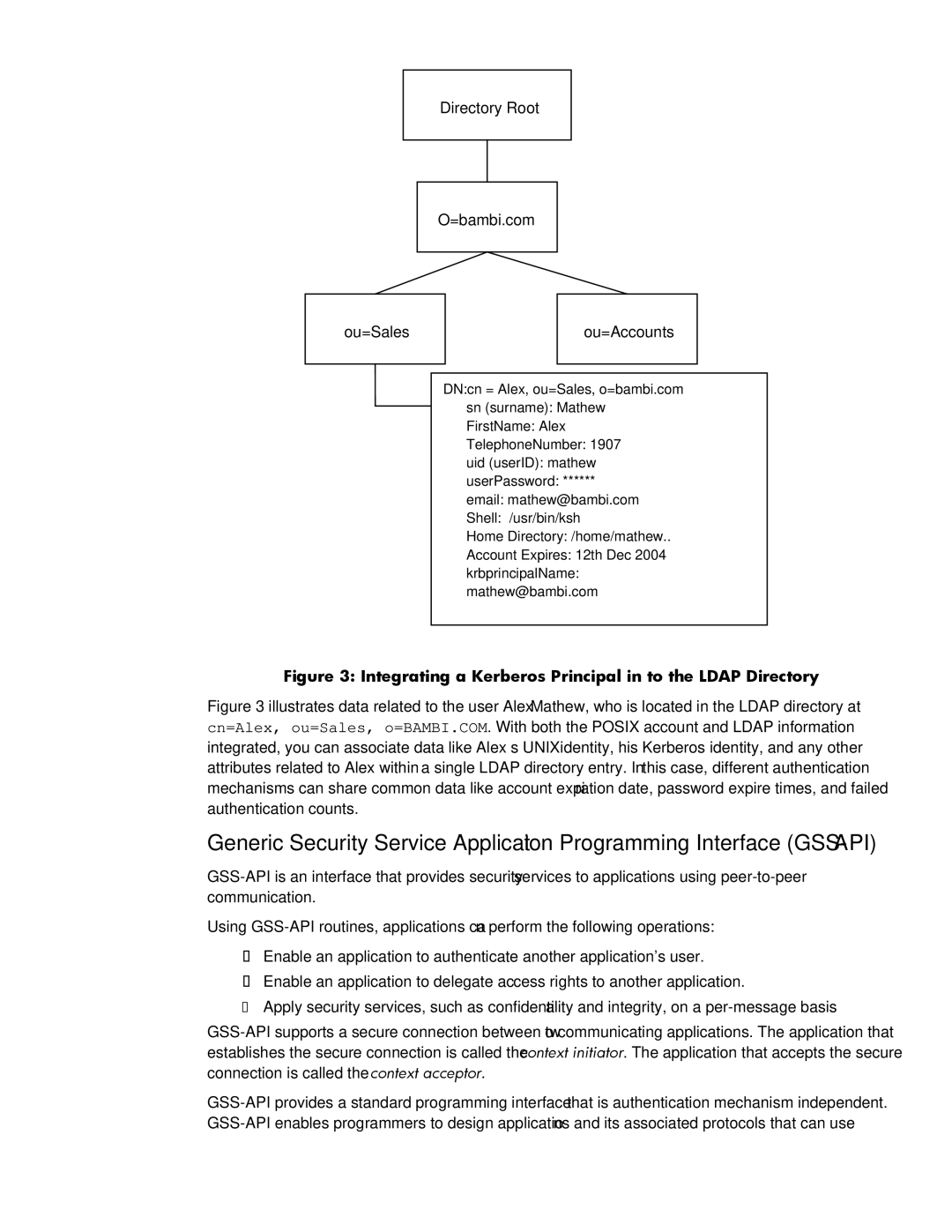
Directory Root
O=bambi.com
ou=Sales
ou=Accounts
DN:cn = Alex, ou=Sales, o=bambi.com sn (surname): Mathew FirstName: Alex TelephoneNumber: 1907
uid (userID): mathew
userPassword: ******
email: mathew@bambi.com
Shell: /usr/bin/ksh
Home Directory: /home/mathew..
Account Expires: 12th Dec 2004 krbprincipalName: mathew@bambi.com
Figure 3: Integrating a Kerberos Principal in to the LDAP Directory
Figure 3 illustrates data related to the user Alex Mathew, who is located in the LDAP directory at cn=Alex, ou=Sales, o=BAMBI.COM. With both the POSIX account and LDAP information integrated, you can associate data like Alex’s UNIX identity, his Kerberos identity, and any other attributes related to Alex within a single LDAP directory entry. In this case, different authentication mechanisms can share common data like account expiration date, password expire times, and failed authentication counts.
Generic Security Service Application Programming Interface
Using
Enable an application to authenticate another application's user.
Enable an application to delegate access rights to another application.
Apply security services, such as confidentiality and integrity, on a
